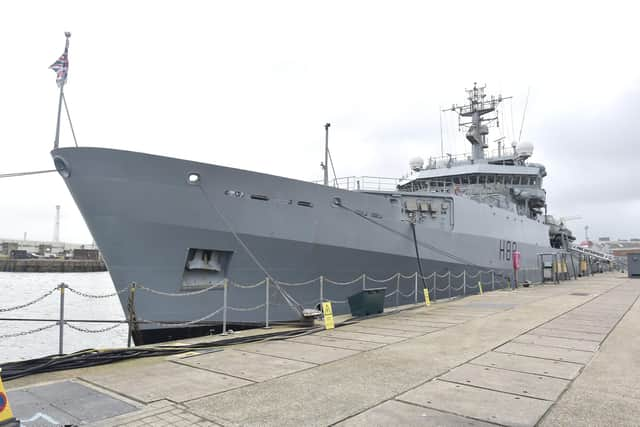Royal Navy: What happens when naval ships and vessels are decommissioned after years of service
and live on Freeview channel 276
From vast carriers, powerful warships and state-of-the-art surveying vessels, the armed forces have a wide array of ships being deployed on missions around the world. After years of service and advancements in technology, many are decommissioned – meaning the vessel has reached the end of its lifespan and retired.
NOW SEE: HMS Echo decommissioned at Portsmouth Naval Base; Patrol boats HMS Sabre and HMS Scimitar bid farewell
Their role in protecting the United Kingdom is celebrated and flags are lowered to make way for new ships. HMS Enterprise was decommissioned on March 30 and was given a heart-warming send off at Portsmouth Naval Base for its 20 years of service.


Advertisement
Hide AdAdvertisement
Hide AdThe vessel has been deployed on hydrographic and oceanographic missions around the world including Japan, the Pacific Rim, the Gulf, the Middle East, Norway and as far south as the Falkland Islands. Crews were involved in a mission which rescued roughly 100 migrants off the coast of Italy in 2016 and was deployed to assess the damage of the port in Beirut, Lebanon following a devastating gas explosion in 2020 – killing 200 people and injuring thousands more.
Commanding Officer Commander Malcolm McCallum discussed the immediate practicalities of what will happen to HMS Enterprise following its decommissioning. He said: ‘We will be putting the ship to bed.
‘The equipment onboard will be taken off, some going to other ships and with other parts being stored for future use. All the engines and systems will be made safe and decommissioned. All the fuel will be taken and off.
‘These processes will take roughly two months, before it’s handed over to be maintained for future use.’ Decommissioning generally occurs due to treaty agreements or for safety reasons.
Advertisement
Hide AdAdvertisement
Hide AdA step called deactivation – also known as inactivation – takes place. During this phase, the ship’s crew will be permitted to offload, remove or dismantle any weapons, ammunition, electronics and other equipment which is deemed useful.
These materials are usually installed on other vessels in the same class and which offer the same capabilities, or placed in storage. There are five common possibilities following this step.
Royal Navy ships can be sold to other countries to fly under a different flag. In 2021, the UK Defence Equipment Sales Authority (DESA) sold two retired Royal Fleet Auxiliary ships – Fort Austin and Fort Rosalie – to Egypt. HMS Ocean, a former Royal Navy flagship, was sold to Brazil in 2018 for £84m – with her name changed to PHM Atlantico.
SEE ALSO: HMS Enterprise rescues 100 migrants
Ships can also be sold at auction and bought by museums, charitable organisations or private parties. They can also be preserved in museums or at historical landmarks in recognition of their service.
Advertisement
Hide AdAdvertisement
Hide AdSome vessels with strategic value can be mothballed. This means a ship is sealed for preservation and parked with other ships in reserve bases for future potential use.
If there is no value left in a vessel, it can be handed over to the naval shipyard to be scrapped.